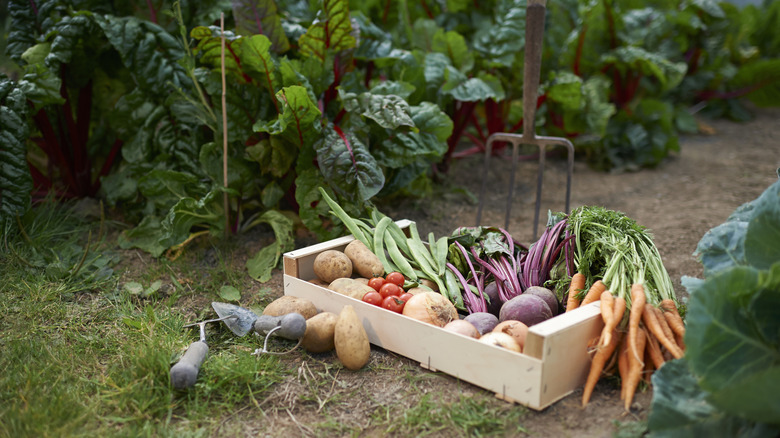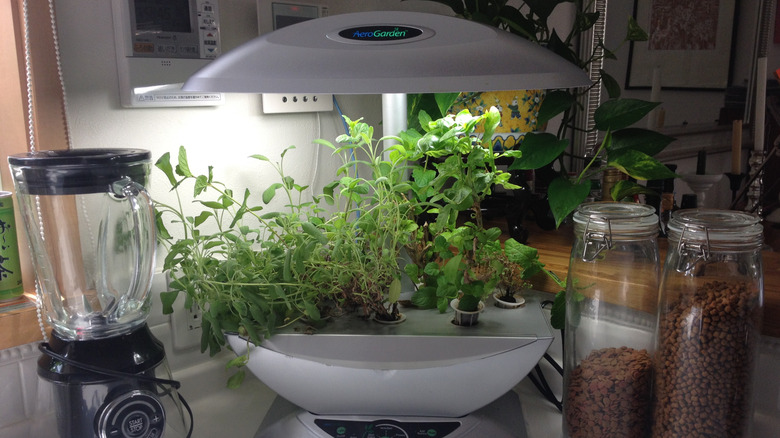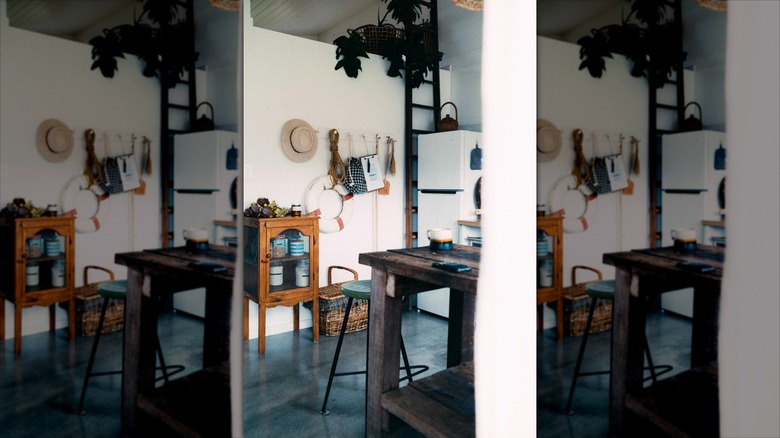How To Bring The Homesteading Trend Indoors - No Backyard Needed
We may receive a commission on purchases made from links.
Urban homesteading is a movement that takes the ideals of "Little House on the Prairie" — growing your own food, baking from scratch, mending clothes instead of buying new ones — and adapts them for modern-day homesteaders working with their little house near a parking lot. Thanks to events like pandemic-related supply chain issues, a proliferation of food deserts, and a desire to live more sustainably and purposefully, urban homesteading is on the rise. Homesteading is fairly straightforward if you have the acreage to grow food and the time to do it. It's another thing altogether to truly be an urban homesteader, particularly if you don't have a big backyard or even a large deck.
However, difficult doesn't equal impossible. In recent years, people have been inspired to make homesteading a reality, despite the obvious challenges. According to Yelp data, homesteading search terms count among those that have seen the biggest jumps. Searches for "plant nurseries" have increased by 58%, "garden centers" by 27%, and "garden statues" by 117%. But popular search terms don't just reflect a desire to create urban food forests. There has been a 163% jump in searches related to building chicken coops, and requests for live chickens skyrocketed a whopping 424%. As these stats demonstrate, the farm-to-table movement truly starts at home, and the urban homesteader is at the center of it, no matter how improbable it may seem.
Addressing the obstacles to urban homesteading
The obstacles preventing you from creating a homestead can be the guideposts you need to point you in the right direction. Unless you grew up on a farm or got a degree in agriculture, you'll probably face a learning curve when it comes to building a homestead in an urban area. That's why starting small is such a good idea. Today's countertop glass-jar herb garden plants the inspirational seeds for a bigger garden tomorrow.
Once you gain confidence in your ability to sprout living things from the dirt, you can go on to set up a garden on your back deck or even inside your home or apartment. In the latter case, you'll utilize tools like vertical gardening containers, hydroponics, and grow lights to establish a thriving indoor garden. This method of homesteading allows you to grow food and companion plants year round.
You also don't have to grow food to tap into the homesteading ethos. Homesteaders usually can and dry the fruits and vegetables they grow, but you don't need to grow food yourself to preserve it. The bounty you bring home from the local farmers market or receive from your neighbor's garden becomes the basis for your canning activities. If you live near a forested area, take up foraging, hunting, or fishing. You might come home with baskets full of morel mushrooms, wild currants, dandelion greens, and acorns, all for the price of a good pair of hiking boots and a wicker basket to put your foraged harvest in.
Other ways to tap into the urban homesteading lifestyle
The urban homesteading movement comes with a certain aesthetic and lifestyle choices that go beyond growing a garden, offering you a simple way to adopt the lifestyle. From a visual perspective, your elevated homesteading aesthetic is related to cottagecore. As such, hand-curated accents can all play a role in creating the look, starting with making rustic wall art the decor of choice. For example, pages from antique botany books turn into wall art once you frame them. Hand-painted folk art pieces you find at the local craft show also work. An old cuckoo clock, a well-worn straw hat, or a homemade quilt can dress up the wall.
The look extends to the furniture as well. It's an aesthetic that's functional and unashamedly repurposes items to save money and resources. This could look like linen and cotton furniture adorned with pillows covered in old cloth grain sacks. A beat-up wooden ladder that's painted with Chalky Chicks white chalk paint offers you a spot to hang knit blankets or potted plants. And a distressed farmhouse dining table flanked by mismatched chairs that you've found at an auction or garage sale brings the look into the kitchen and dining area. The look is cozy and inviting. In short, your space should look like a place you want to retreat to after you've spent all day working in your garden, even if you don't quite have a garden to retreat from just yet.


